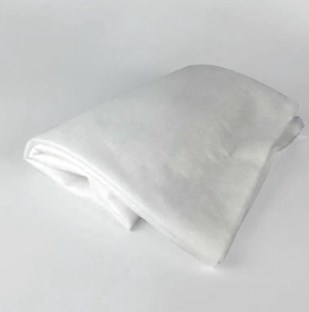2025-10-22
Definition and Basic Characteristics of Non-woven Fabrics
Non-woven fabrics, or nonwovens, are materials whose fabric structure is formed directly from fibers, without the need for traditional spinning and weaving processes. Compared to traditional fabrics, non-woven fabrics offer unique advantages in production processes, structural properties, and application range. Their lightweight, flexibility, adjustability, and ability to provide waterproofing, dustproofing, and thermal insulation have led to their widespread use in various industries. Modern technological advances have further promoted the innovation and popularization of non-woven fabrics in environmentally friendly and functional materials.
The core advantages of non-woven fabrics lie in the random distribution of their fibers and their physical, chemical, or mechanical reinforcement. This structure not only imparts high strength and durability, but also improves breathability and moisture absorption. Non-woven fabrics have become an irreplaceable and important material in fields such as medicine, hygiene, industry, and agriculture.
Production Process and Technological Innovations in Non-woven Fabrics
The production process of non-woven fabrics primarily involves fiber selection, web formation, reinforcement, and finishing. Fiber raw materials can be derived from natural fibers, synthetic fibers, or even functional fibers, allowing manufacturers to flexibly choose the right one based on specific application requirements. Web-forming methods primarily include dry, wet, and meltblown, each offering unique performance advantages.

Dry-laid web-forming technology uses mechanical combing and air flow to form a mesh structure, suitable for producing nonwovens with a certain degree of toughness and thickness. Wet-laid web-forming utilizes water flow to evenly distribute fibers on a mesh mold and is often used to produce materials with high strength and high breathability. Meltblown, a key process in modern nonwovens production, melts fibers at high temperatures to form a fine mesh structure, imparting excellent filtration and barrier properties.
In recent years, the introduction of nanotechnology and functional coatings has unlocked greater potential for nonwovens in the fields of protection, filtration, and smart materials. By manipulating fiber diameter, network structure, and surface chemistry, nonwovens can achieve multi-layer composite functionality, meeting the demand for high-performance materials in medical protection, air purification, and industrial production.
Applications of Non-woven Fabrics in the Medical and Healthcare Sector
The importance of nonwovens in the medical and healthcare industry is undeniable. Disposable surgical gowns, masks, gloves, bed sheets, and barrier curtains all rely on the superior properties of nonwovens. These materials not only offer excellent barrier properties, water resistance, and breathability, but can also be sterilized to ensure safe use.
With growing public health awareness, the use of nonwovens in masks and protective equipment has become a key driver of market growth. Nonwovens with high-efficiency filtration and low breathing resistance provide reliable protection for medical staff and consumers alike. Furthermore, their recyclability and environmental friendliness are key considerations in the design of modern medical products.

The Value of Non-woven Fabrics in Industry and Construction
The demand for nonwovens in the industrial sector is growing. High-performance filtration materials, sound-absorbing materials, insulation materials, and building waterproofing membranes all rely on nonwovens. In construction, nonwovens are used for roof waterproofing, foundation insulation, and dust control in interior decoration. Their high durability and ease of installation significantly improve project efficiency.
In industrial production, nonwovens also provide effective liquid filtration and air purification. Particularly in electronics, automotive, and machinery manufacturing, nonwoven materials, with their highly controllable pore structure, ensure equipment protection and production quality. Advanced nonwoven technology not only reduces production costs but also drives the development of lightweight and functionalized industrial materials.
Innovative Applications of Non-woven Fabrics in Agriculture and Environmental Protection
Nonwovens are also widely used in agriculture. From crop cover films and insect repellents to ground films and greenhouse coverings, nonwovens provide efficient solutions for agricultural production by regulating light transmittance, moisture retention, and ventilation. Their lightweight, weather-resistant, and biodegradable properties effectively improve crop growth environments and yields.
In the environmental protection sector, nonwovens, as a key component of green materials, demonstrate tremendous development potential. Degradable nonwovens not only reduce plastic pollution but also provide sustainable alternatives for packaging, disposable items, and public facilities. With growing global environmental awareness, functional, degradable, and recyclable nonwoven products are gaining increasing popularity in the market.
As a significant achievement in modern materials science, non-woven fabrics not only possess broad application prospects but also play a central role in driving industrial and social development. From healthcare to industrial production, from agriculture to environmental protection, the value of non-woven fabrics is becoming increasingly prominent. By continuously optimizing production processes, enhancing material properties, and exploring multifunctional applications, non-woven fabrics will become a more efficient, environmentally friendly, and intelligent material solution in the future.